#THAT’S THE STUFF OF FANTASIES.
Text
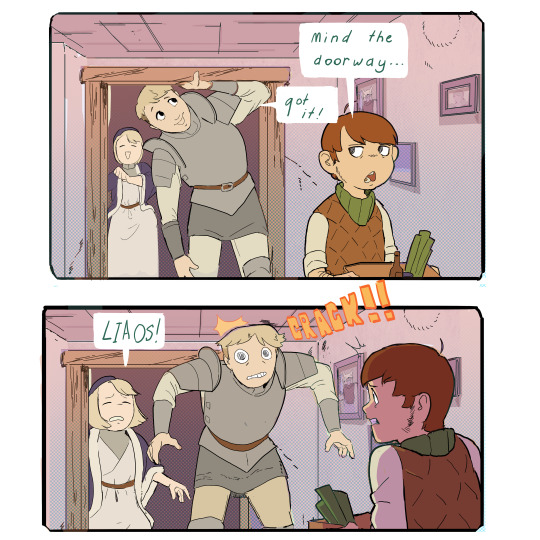
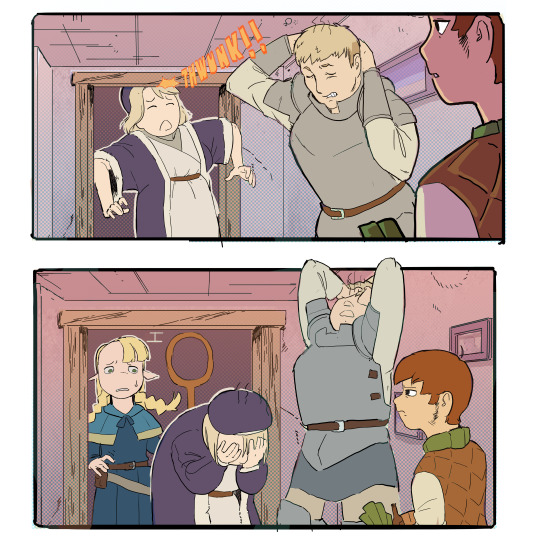
I understand that tall men are our POV characters, but surely being like a foot taller than everyone around them would have some occasional consequences
#youd think thisd happen at least a little bit#I love stuff in fantasy where they'll occasionally talk about how weird humans are. it comes up a few times in the story but honestly I do#love it a lot. especially that troll stuff I thought that was pretty cool#laios touden#falin touden#marcille donato#dungeon meshi#delicious in dungeon#chilchuck tims#arts#GODAMN IT I SPELT HIS NAME WRONG I KNEW I SHOULD HAVNT HAVE RUSHED THE DIALOUGE
82K notes
·
View notes
Text
just having some fun with interesting fantasy imagery! Give it a reblog, if you play, please? And tell me WHY you picked what you picked if you want?
#fun stuff#fantasy#polls#it's always fun when the magic in a story leads to some REALLY interesting living constructs of creatures right?
20K notes
·
View notes
Text
Writing Tips Master Post
Character writing/development:
Character Arcs
Making Character Profiles
Character Development
Comic Relief Arc
Internal Conflict
Character Voices
Creating Distinct Characters
Suicidal Urges/Martyr Complex
Creating Likeable Characters
Writing Strong Female Characters
Writing POC Characters
Building Tension
Plot devices/development:
Intrigue in Storytelling
Enemies to Lovers
Alternatives to Killing Characters
Worldbuilding
Misdirection
Consider Before Killing Characters
Foreshadowing
Narrative:
Emphasising the Stakes
Avoid Info-Dumping
Writing Without Dialogue
1st vs. 2nd vs. 3rd Perspective
Fight Scenes (+ More)
Transitions
Pacing
Writing Prologues
Dialogue Tips
Writing War
Writing Cheating
Worldbuilding:
Worldbuilding: Questions to Consider
Creating Laws/Rules in Fantasy Worlds
Book writing:
Connected vs. Stand-Alone Series
A & B Stories
Writer resources:
Writing YouTube Channels, Podcasts, & Blogs
Online Writing Resources
Outlining/Writing/Editing Software
Writer help:
Losing Passion/Burnout
Overcoming Writer's Block
Fantasy terms:
How To Name Fantasy Races (Step-by-Step)
Naming Elemental Races
Naming Fire-Related Races
How To Name Fantasy Places
Ask games:
Character Ask Game #1
Character Ask Game #2
Character Ask Game #3
Miscellaneous:
1000 Follower Post
2000 Follower Poll
Writing Fantasy
#masterlist#masterpost#writeblr#writing#writing tips#writing advice#writing help#writing resources#author resources#writer resources#creative writing#character writing#character development#plot development#narrative#book writing#writers block#writer stuff#writer things#fantasy writing#writer ask game#deception-united
18K notes
·
View notes
Text

I saw you again in a dream, or maybe it was a nightmare
#dimension 20#fantasy high#ankarna#the nightmare king#fantasy high junior year#fhjy spoilers#my stuff#YAYYYY yuri!#cassankarna
10K notes
·
View notes
Text

I probably put way too much thought into it but I do enjoy making a more in depth story rather than winging it. I like to actually think about the worldbuilding, make sure things actually connect and make sense. I am a big history nerd and I feel like it's the closest I can get to writing my own history.
#writing#writing memes#worldbuilding#meme#fantasy#author#writerscommunity#writeblr#bookblr#writer#writing stuff#writers on tumblr
14K notes
·
View notes
Text
You gotta hand it to Fig. All of the Bad Kids were given foils this season and they got to decide how much they wanted to engage with that part of the plot. Gorgug only interacted with Mary Ann in passing despite them both being on the Owlbears. Fabian noped out of chatting up Ivy once she crossed a line with Mazey. Riz was so busy that he truly had no time to engage with Kipperlilly even though she's obsessed with him. Kristen interacted a bit with Buddy but spent way more time verbally sparring with Kipperlilly. And Adaine was somewhat interested in Oisin but never overtly acted on it.
But Fig?
She's in Ruben's WALLS. She's in his DREAMS. She's faking her alter emo's death. She's got the Fantasy FBI after her. She's SO SO tiny. No one is doing it like Fig's doing it.
#dimension 20#fantasy high#d20#spoilers#dimension 20 spoilers#fantasy high spoilers#i wish we'd gotten more rat grinder stuff in general just to have a better read on them#but ooh man emily axford MVP on this front#fig faeth#the bad kids are valid for prioritizing their friends over the party of haters#but it's still so funny that they en masse were like eh except for Fig who was like I'm gonna haunt this gnome
10K notes
·
View notes
Text
I think one of the weirdest side effects of being a writer is that while I'm reading, I'll just start subconsciously editing the book. Like, if a sentence sounds odd or off to me, I'll fix it in my head and continue reading as if that were how it was written.
Does anybody else do this?
#book writing#fiction writing#story writing#writeblr#creative writing#novel writing#writers#writing#am writing#aspiring writer#fantasy writer#original writing#teen writer#tumblr writers#tumblr writing community#writer#writer community#writer life#writer stuff#writer things#writerblr#writers and readers#writers community#writers life#writers of tumblr#writerscommunity#writers on tumblr#writerscorner#writing community#writing life
5K notes
·
View notes
Text
Remember kids, Violins isn't always the answer! (Some times it's Atl-lute-l!)
Shameless* self-promo:
The College of Arrows is an archery learning space with tutorials ranging from equipment basics to advanced tricks. It's an active, constantly updating community with new courses added all the time, skills sharing, and opportunities for personalised tuition.
If that sounds like your sort of thing, click here to join our mailing list and find out more!
#archer#archery#nerd#fantasy#bard#dnd#final fantasy#genshin impact#*I do actually feel embarrassed plugging this stuff but I have to start somewhere
7K notes
·
View notes
Text
#ffxii#fran eruyt#balthier#Graceorsomething#short king advocate#final fantasy#ff12#video#my video#my stuff#music#the bunny ears overshadow him#suggestive
6K notes
·
View notes
Text
Congratulations! You are now a Magic-User!!
#POLL#MY POLLS#POLLS#TUMBLR POLLS#RANDOM POLLS#TUMBLR POLL#POLL TIME#FUN STUFF#magic#spell#fantasy#witches#witch#wizard#wizard posting#wizardblogging#wizardcore#witchcore#magic powers
7K notes
·
View notes
Text
Here's what you missed from the ScreenRant+ interviews with the Fantasy High: Junior Year cast
The reason Gorgug and Zelda broke up was a natural drifting apart. There were no animosity or harsh feelings, but Zac felt it unnatural for them to stay together for such a long time and still be true to the characters
The reason Cassandra's name is found in ancient stones and writings even though Ally was asked to make it up in Sophomore Year is because it wasn't Kristen choosing a name, it was Ally choosing the name that came to Kristen in a holy revelation of remembering a forgotten name
Ayda Aguefort wasn't removed from the season because she was too powerful to have around, but rather that Brennan genuinely felt a natural follow to her arc was to spend time creating a family bond with Arthur
All of the cast are clear with the fact that Senior Year is not being discussed at the current moment and is something that would be far in the future, but all of the cast are also excited to return to Senior Year and Brennan has plans for what he wants to expand on and plot threads in Senior Year. Additionally, Brennan said he left Sandra Lynn and her relationship to Bobby Dawn unresolved because he rather wanted to leave that storyline for a Senior Year.
Ally considers Gertie's action of immediately declaring Kristen as her nemesis after realising Kristen didn't want to be with her forever after kissing her once was Kristen "getting a taste of her own medicine" and finally being on the end of the insane chaos she's been dealing out to NPCs for years.
Emily was the one who came up with Fig taking on Gilear's bad luck/curse and she was inspired to do it by Fabian's delevelling in Sophomore Year.
After being pitched the headcanon that the adventuring party Goldenhoard was talking to in the first freshman year episodes was The Rat Grinders Brennan liked it so much he, on the spot, retconned it into canon
The cast thinks the four dogs joke is even funnier because they know Ally's mom is a dog breeder
#i think these are like the stuff people would know. they also talked about some other things but not like answers like this list#dimension 20#d20#fantasy high#fhjy#screen rant#brennan lee mulligan#ally beardsley#zac oyama
7K notes
·
View notes
Text
10 Ways to Add Sizzle to Your Boring Writing
Writing that sizzles captures the reader's attention and keeps them engaged from start to finish. Whether you're an experienced writer or just starting out, there are several techniques you can use to make your writing more exciting and dynamic. Here are ten detailed ways to add sizzle to your boring writing:
1. Use Vivid Descriptions
Vivid descriptions bring your writing to life by creating a rich, immersive experience for the reader. Instead of relying on generic or bland language, use specific details that appeal to the senses. Describe how things look, sound, smell, taste, and feel to paint a vivid picture.
In Detail:
Visual Descriptions: Use color, shape, and size to create a mental image. Instead of saying "The car was old," say "The rusty, olive-green car wheezed as it pulled into the driveway."
Sound Descriptions: Incorporate onomatopoeia and detailed sound descriptions. Instead of "The music was loud," say "The bass thumped, and the high notes pierced through the night air."
Smell and Taste Descriptions: Use sensory language. Instead of "The food was good," say "The aroma of roasted garlic and herbs filled the room, and the first bite was a burst of savory flavors."
2. Show, Don't Tell
"Show, don't tell" is a fundamental writing principle that means revealing information through actions, thoughts, dialogue, and sensory details rather than straightforward exposition. This approach makes your writing more engaging and allows readers to experience the story.
In Detail:
Actions Over Exposition: Instead of telling the reader "Jane was scared," show her fear through her actions: "Jane's hands trembled as she fumbled with the lock, her breath coming in shallow gasps."
Dialogue: Use conversations to reveal character traits and emotions. Instead of "John was angry," show his anger through his words and tone: "John's voice was a low growl as he said, 'I can't believe you did this.'"
Internal Thoughts: Reveal characters' inner worlds. Instead of "Emma felt relieved," show her relief: "Emma let out a long breath she didn't realize she was holding and sank into the chair, a smile tugging at her lips."
3. Create Relatable Characters
Relatable characters are crucial for keeping readers invested in your story. Characters should have depth, including strengths, weaknesses, desires, and fears. When readers see aspects of themselves in your characters, they're more likely to care about their journeys.
In Detail:
Character Flaws: Give your characters realistic flaws. A perfect character can be boring and unrelatable. Show how these flaws impact their decisions and relationships.
Character Arcs: Ensure your characters grow and change throughout the story. A well-crafted character arc can turn a good story into a great one.
Background and Motivations: Provide backstories and motivations. Why does your character act the way they do? What drives them? This adds depth and makes them more three-dimensional.
4. Add Dialogue
Dialogue can break up large blocks of text and make your writing more dynamic. It reveals character, advances the plot, and provides opportunities for conflict and resolution. Ensure your dialogue sounds natural and serves a purpose.
In Detail:
Natural Speech: Write dialogue that sounds like real conversation, complete with interruptions, pauses, and colloquial language. Avoid overly formal or stilted speech.
Purposeful Dialogue: Every line of dialogue should have a purpose, whether it's revealing character, advancing the plot, or building tension. Avoid filler conversations that don't add to the story.
Subtext: Use subtext to add depth. Characters might say one thing but mean another, revealing their true feelings through what they don't say directly.
5. Use Strong Verbs
Strong verbs make your writing more vivid and energetic. They convey action and emotion effectively, making your sentences more powerful and engaging.
In Detail:
Action Verbs: Choose verbs that show precise actions. Instead of "She went to the store," say "She dashed to the store."
Avoid Weak Verbs: Replace weak verbs and verb phrases with stronger alternatives. Instead of "He was walking," say "He strode."
Emotionally Charged Verbs: Use verbs that convey specific emotions. Instead of "She was sad," say "She wept."
6. Vary Sentence Structure
Varying sentence structure keeps your writing interesting and prevents it from becoming monotonous. Mix short, punchy sentences with longer, more complex ones to create a rhythm that engages readers.
In Detail:
Short Sentences for Impact: Use short sentences to create tension, urgency, or emphasize a point. "He stopped. Listened. Nothing."
Complex Sentences for Detail: Use longer sentences to provide detailed descriptions or explain complex ideas. "As the sun set behind the mountains, the sky transformed into a canvas of oranges, pinks, and purples, casting a warm glow over the serene landscape."
Combine Different Structures: Mix simple, compound, and complex sentences to maintain a natural flow. Avoid repetitive patterns that can make your writing feel flat.
7. Introduce Conflict
Conflict is the driving force of any story. It creates tension and keeps readers invested in the outcome. Without conflict, your story can become stagnant and uninteresting.
In Detail:
Internal Conflict: Characters should struggle with internal dilemmas, fears, and desires. This adds depth and relatability.
External Conflict: Introduce obstacles and challenges that characters must overcome. This can be other characters, societal pressures, or natural forces.
Resolution: Show how conflicts are resolved, leading to character growth and plot progression. Ensure resolutions feel earned and satisfying.
8. Use Metaphors and Similes
Metaphors and similes add creativity and depth to your writing. They help readers understand complex ideas and emotions by comparing them to familiar experiences.
In Detail:
Metaphors: Directly state that one thing is another to highlight similarities. "Time is a thief."
Similes: Use "like" or "as" to make comparisons. "Her smile was like sunshine on a rainy day."
Avoid Clichés: Create original comparisons rather than relying on overused phrases. Instead of "busy as a bee," find a fresh analogy.
9. Create Suspense
Suspense keeps readers on the edge of their seats, eager to find out what happens next. Use foreshadowing, cliffhangers, and unanswered questions to build tension and anticipation.
In Detail:
Foreshadowing: Drop subtle hints about future events. This creates anticipation and a sense of inevitability.
Cliffhangers: End chapters or sections with unresolved tension or unanswered questions to compel readers to keep going.
Pacing: Control the pace of your story to build suspense. Slow down for crucial moments and speed up during action scenes.
10. Edit Ruthlessly
Great writing often emerges during the editing process. Be willing to cut unnecessary words, tighten your prose, and refine your sentences. Editing improves clarity, pace, and overall readability.
In Detail:
Cut Redundancies: Remove unnecessary words and repetitive phrases. "In my opinion, I think" can be reduced to "I think."
Focus on Clarity: Ensure each sentence conveys its intended meaning clearly and concisely.
Proofread: Check for grammar, punctuation, and spelling errors. A polished manuscript reflects professionalism and attention to detail.
#writeblr#writing#creative writing#thewriteadviceforwriters#writing tips#writers block#on writing#writers and poets#how to write#novel writing#writing blog#writing advice#writer#authoradvice#author#book writing#women writers#fiction#authors on tumblr#novelist#writer stuff#female writers#fiction writing#fantasy novel#novel
5K notes
·
View notes
Text


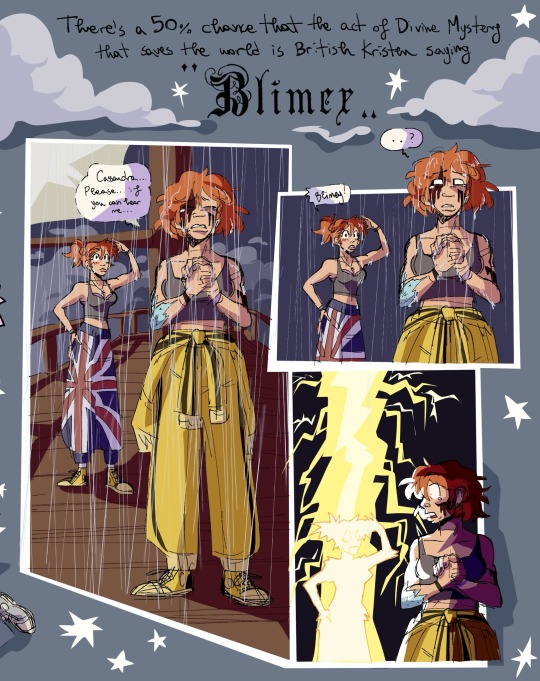
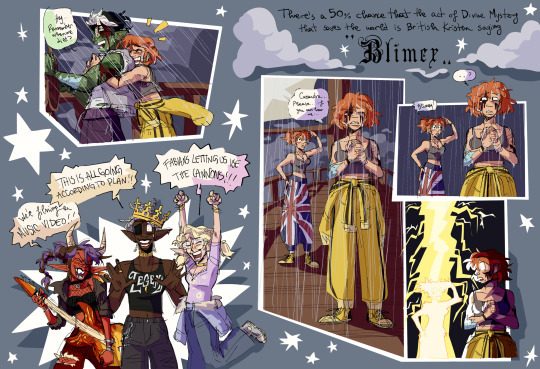
Blarmy!
#dimension 20#fantasy high#d20#fhjy#d20 fhjy#fig faeth#gorgug thistlespring#adaine o'shaughnessey#fabian seacaster#kristen applebees#k2#british kristen#heaven gained a real one today ….#the blimey intervention actually made me scream it was … it was crazy#the stuff of legend#also had to draw the party people ❤️#and gorgugs little comment#ive seen a couple of posts about it btw i see it more as a look how far weve come#like remember when we died to the corn cuties? well now were in the sky about to die from a bunch of fucking dragons attacking us#isnt life so funny
6K notes
·
View notes
Text
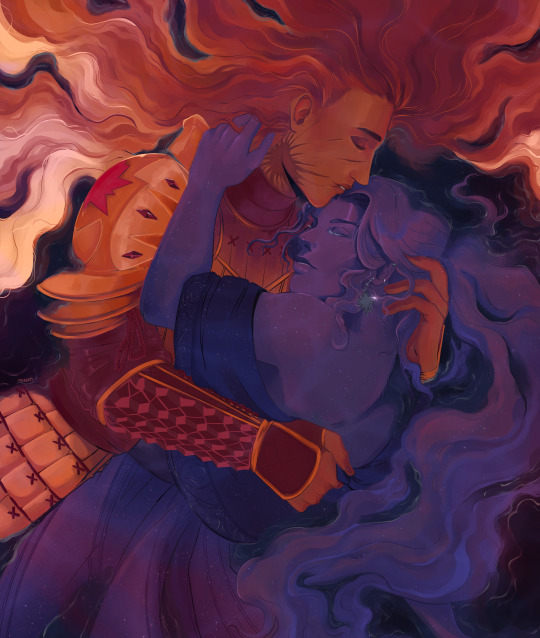
Holding each other like otters, drifting through the Astral Sea
#d20#dimension 20#dimension 20 fanart#fantasy high junior year#fantasy high junior year spoilers#ankarna#cassandra d20#my art#had to draw them#should I be doing other stuff?#maybe#but totally worth it
4K notes
·
View notes
Text

lucy, you're coming back to us too, right? to me?
#dimension 20#fantasy high#lucy frostblade#kipperlilly copperkettle#fantasy high spoilers#my stuff#imagining how long she waited before they realized she wasn't coming back 🫠#the rat grinders
6K notes
·
View notes
Text
another thing fantasy writers should keep track of is how much of their worldbuilding is aesthetic-based. it's not unlike the sci-fi hardness scale, which measures how closely a story holds to known, real principles of science. The Martian is extremely hard sci-fi, with nearly every detail being grounded in realistic fact as we know it; Star Trek is extremely soft sci-fi, with a vaguely plausible "space travel and no resource scarcity" premise used as a foundation for the wildest ideas the writers' room could come up with. and much as Star Trek fuckin rules, there's nothing wrong with aesthetic-based fantasy worldbuilding!
(sidenote we're not calling this 'soft fantasy' bc there's already a hard/soft divide in fantasy: hard magic follows consistent rules, like "earthbenders can always and only bend earth", and soft magic follows vague rules that often just ~feel right~, like the Force. this frankly kinda maps, but I'm not talking about just the magic, I'm talking about the worldbuilding as a whole.
actually for the purposes of this post we're calling it grounded vs airy fantasy, bc that's succinct and sounds cool.)
a great example of grounded fantasy is Dungeon Meshi: the dungeon ecosystem is meticulously thought out, the plot is driven by the very realistic need to eat well while adventuring, the story touches on both social and psychological effects of the whole 'no one dies forever down here' situation, the list goes on. the worldbuilding wants to be engaged with on a mechanical level and it rewards that engagement.
deliberately airy fantasy is less common, because in a funny way it's much harder to do. people tend to like explanations. it takes skill to pull off "the world is this way because I said so." Narnia manages: these kids fall into a magic world through the back of a wardrobe, befriend talking beavers who drink tea, get weapons from Santa Claus, dance with Bacchus and his maenads, and sail to the edge of the world, without ever breaking suspension of disbelief. it works because every new thing that happens fits the vibes. it's all just vibes! engaging with the worldbuilding on a mechanical level wouldn't just be futile, it'd be missing the point entirely.
the reason I started off calling this aesthetic-based is that an airy story will usually lean hard on an existing aesthetic, ideally one that's widely known by the target audience. Lewis was drawing on fables, fairy tales, myths, children's stories, and the vague idea of ~medieval europe~ that is to this day our most generic fantasy setting. when a prince falls in love with a fallen star, when there are giants who welcome lost children warmly and fatten them up for the feast, it all fits because these are things we'd expect to find in this story. none of this jars against what we've already seen.
and the point of it is to be wondrous and whimsical, to set the tone for the story Lewis wants to tell. and it does a great job! the airy worldbuilding serves the purposes of the story, and it's no less elegant than Ryōko Kui's elaborately grounded dungeon. neither kind of worldbuilding is better than the other.
however.
you do have to know which one you're doing.
the whole reason I'm writing this is that I saw yet another long, entertaining post dragging GRRM for absolute filth. asoiaf is a fun one because on some axes it's pretty grounded (political fuck-around-and-find-out, rumors spread farther than fact, fastest way to lose a war is to let your people starve, etc), but on others it's entirely airy (some people have magic Just Cause, the various peoples are each based on an aesthetic/stereotype/cliché with no real thought to how they influence each other as neighbors, the super-long seasons have no effect on ecology, etc).
and again! none of this is actually bad! (well ok some of those stereotypes are quite bigoted. but other than that this isn't bad.) there's nothing wrong with the season thing being there to highlight how the nobles are focused on short-sighted wars for power instead of storing up resources for the extremely dangerous and inevitable winter, that's a nice allegory, and the looming threat of many harsh years set the narrative tone. and you can always mix and match airy and grounded worldbuilding – everyone does it, frankly it's a necessity, because sooner or later the answer to every worldbuilding question is "because the author wanted it to be that way." the only completely grounded writing is nonfiction.
the problem is when you pretend that your entirely airy worldbuilding is actually super duper grounded. like, for instance, claiming that your vibes-based depiction of Medieval Europe (Gritty Edition) is completely historical, and then never even showing anyone spinning. or sniffing dismissively at Tolkien for not detailing Aragorn's tax policy, and then never addressing how a pre-industrial grain-based agricultural society is going years without harvesting any crops. (stored grain goes bad! you can't even mouse-proof your silos, how are you going to deal with mold?) and the list goes on.
the man went up on national television and invited us to engage with his worldbuilding mechanically, and then if you actually do that, it shatters like spun sugar under the pressure. doesn't he realize that's not the part of the story that's load-bearing! he should've directed our focus to the political machinations and extensive trope deconstruction, not the handwavey bit.
point is, as a fantasy writer there will always be some amount of your worldbuilding that boils down to 'because I said so,' and there's nothing wrong with that. nor is there anything wrong with making that your whole thing – airy worldbuilding can be beautiful and inspiring. but you have to be aware of what you're doing, because if you ask your readers to engage with the worldbuilding in gritty mechanical detail, you had better have some actual mechanics to show them.
#finx rambles#worldbuilding#for writers#honestly I quite liked the asoiaf books I read#it's a well-constructed story! it's a well-constructed world too on its own merits#none of this stuff about grain and spinning is actually important to the story#the problem is that grrm himself seems to just. not realize this#and goes about blithely insisting he's created an extraordinarily realistic fantasy world where all the tax policies make sense#he has not!#he has invited people to tear his creation apart if they can and! it turns out! they absolutely can!#this shit's got no tensile strength! it's made of glue and popsicle sticks!#you're not supposed to put weight on it
4K notes
·
View notes